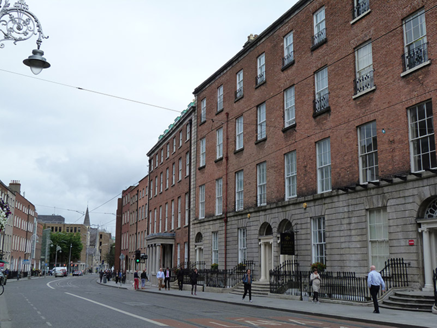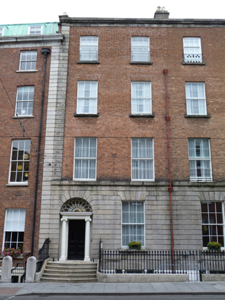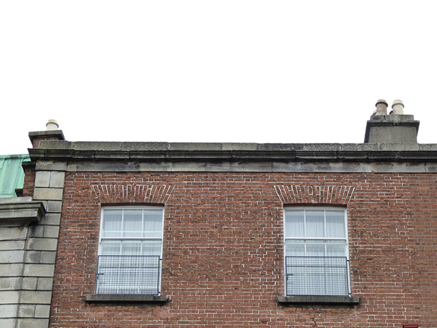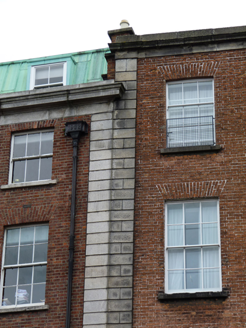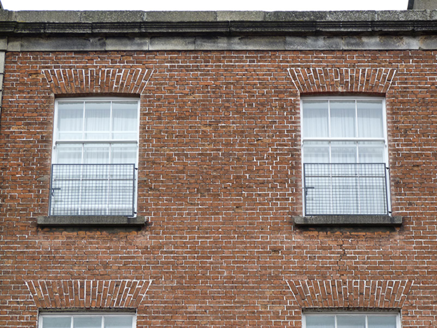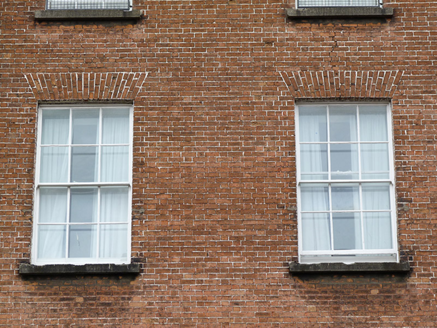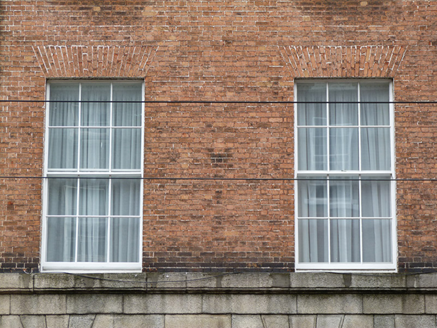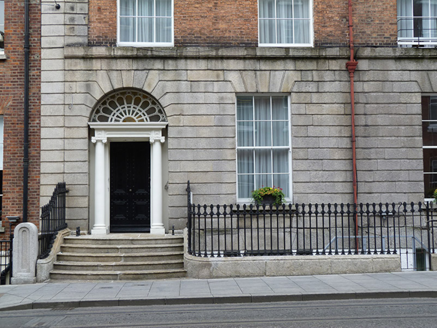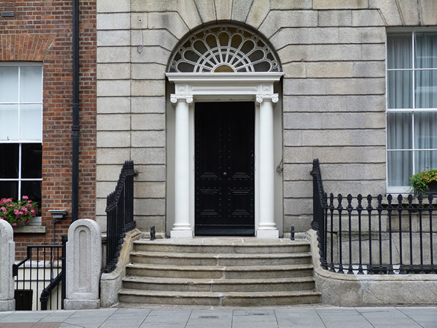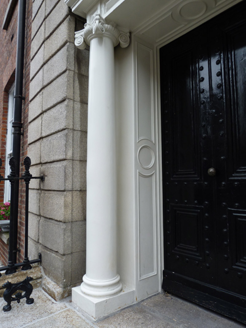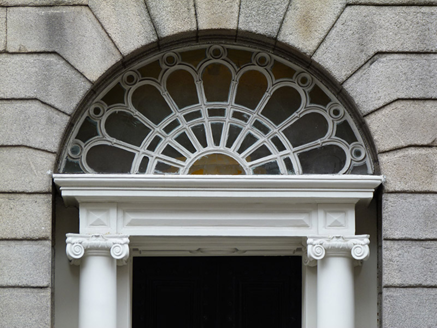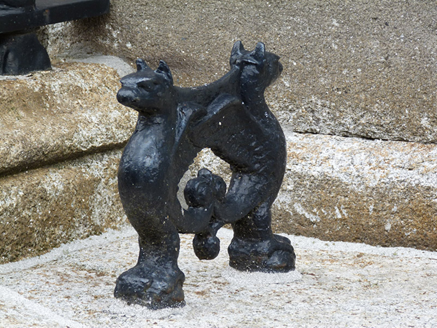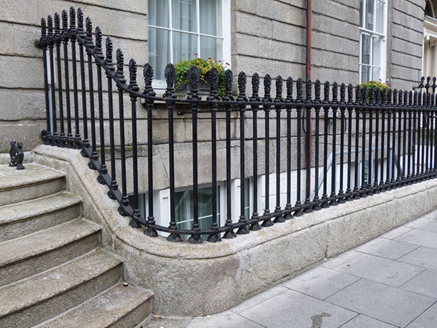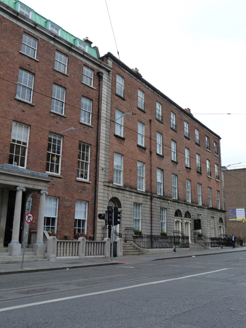Survey Data
Reg No
50920235
Rating
Regional
Categories of Special Interest
Architectural, Artistic
Original Use
House
Historical Use
Hospital/infirmary
In Use As
Hotel
Date
1820 - 1840
Coordinates
315755, 233172
Date Recorded
03/09/2015
Date Updated
--/--/--
Description
Terraced two-bay four-storey over basement former house, built c. 1830, with full-height return to rear (east) elevation. Later in use as hospital, now in use as hotel. M-profile pitched roof, hipped to north end, hidden behind ashlar granite parapet with moulded cornice and granite coping. Rendered chimneystacks to south party wall having granite cornices and yellow clay pots, parapet gutters, cast-iron rainwater goods breaking through to south-end. Lead-lined flat roof to return. Red brick walls laid in Flemish bond with raised granite strip quoins to north-end, channelled granite walling to ground floor and painted walls to basement. Rendered walls to rear (east) elevation. Square-headed window openings with brick voussoirs, largely projecting granite sills and continuous granite sill course to first floor. Replacement six-over-six timber sliding sash windows with horns, three-over-six to third floor of principal elevation (west) having steel grilles affixed. Tripartite opening to basement with panelled granite mullions, surrounds with deep granite lintel course over and uPVC windows. Round-headed door opening with channelled granite reveals having cast-iron Scamozzian Ionic columns on plinth stops, supporting panelled frieze and cornice with decorative cast-iron petal fanlight. Panelled linings to recessed doorway with studded timber panelled door having brass furniture. Granite entrance platform with cast-iron boot scrapers and curved granite steps, flanked by cast-iron railings topped with anthemion finials, over carved granite plinth, enclosing basement well to south-end. Street-fronted, located on east side of Harcourt Street, abutted by matching terraces to south, Nos. 85-3 (50920236-8).
Appraisal
This former townhouse was built as part of a unified terrace of four, comprising Nos. 83-6 (50920238-5), the principal façade is granite faced at ground floor level and terminated at both ends by granite quoins. The building became part of the former hospital to the north (50920234) and was subject to successive remodelling during the twentieth-century. It retains a fine Scamozzian Ionic doorcase, unusually made of cast-iron, a petal fanlight and decorative railings. The grand scale, confident use of materials and artistic detailing of this terraced group, makes it an imposing presence on what is a relatively intact streetscape of late-Georgian and early-Victoria townhouses. Casey (2005) notes that internally the rooms are very tall and grand with rich Greek Revival fibrous plaster decoration. Harcourt Street was opened 1777 by John Hatch, barrister and Seneschal of the Manor of St. Sepulchre. Development was sporadic until the late 1790s when Messrs Hatch, Wade and Whitten obtained approval from the Wide Street Commissioners for the further development of the street.
